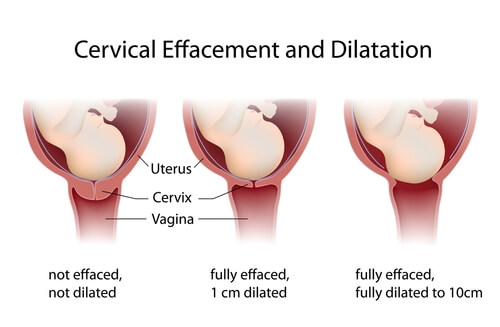What Happens During Dilation?

The process of dilation constitutes the first phase of labor and is one of the three stages of childbirth, prior to delivery and the expulsion of the placenta.
During dilation, the cervix plays a key role. Contractions make it possible for it to open, allowing the child to be born.
In the event of premature contractions, the cervix may shorten or open up significantly.
In this case, it’s advisable to go to the hospital in order to stop the contractions and see to the welfare of the mother and child.
In contrast, during pregnancy the cervix is kept closed in order to keep the fetus warm and safe throughout its development.
Other symptoms prior to delivery that will come before dilation include: the expulsion of the mucus plug, the beginning of contractions, the breaking of water and the dropping of the fetus into the pelvis.
When you’re fully dilated, the baby can be pushed out.
How does dilation occur?
Dilation can occur in two ways:
- Naturally, occurring spontaneously without the need for medical intervention.
- Through drugs, when it is deemed necessary for maternal or fetal health.

Phases of dilation
The duration of time from the beginning of contractions to the moment of delivery is known as the “dilation phase.”
It’s the longest stage of labor and usually lasts between 8 and 12 hours for a mother’s first child. For the second child, it lasts around 5 to 7 hours.
On average, the cervix expands by one centimeter per hour, but the rate of dilation isn’t regular. The first centimeters usually take the longest. But this is only an average, since each mother is different, just like each birth.
These are the phases of dilation:
1. Latent phase
The contractions occur every 5 to 30 minutes and last from 30 to 45 seconds on average.
If the contractions are of a low intensity, you can feel back and groin pain. However, the contractions are still effective: during this phase, the cervix can dilate up to 3 cm.
2. Active work phase
The next contractions occur every 5 minutes and last between 30 and 40 seconds. Dilation will reach 5 centimeters.
The contractions will begin to occur every 2 to 3 minutes and may last up to 50 seconds. The cervix will dilate to 6 centimeters.
3. Fast acceleration phase
This is the last stage of dilation of the cervix, which will reach 10 cm. In this phase, everything accelerates: the contractions occur every 2 to 3 minutes and lengthen in duration, leaving little respite for the mother.
It can be accompanied by nausea, vomiting, flushing or chills and is the most difficult stage for the mother.
Types of dilation
There are two types of dilation:
Passive dilation
The cervix dilates from 0 to 3 centimeters and contractions occur irregularly and with an average intensity.
It is convenient to be at home or in a quiet environment. You shouldn’t go to the hospital until the contractions occur every 5 minutes for 1 hour.
Active dilation
The cervix dilates from 3 to 10 centimeters, and the contractions become more frequent and intense.
It’s best to be in the hospital at this time, as these contractions precede the delivery of the baby.

The cervix: when dilation does not advance
Sometimes, dilation of the cervix doesn’t occur quickly enough or stagnates.
Some of the causes may include: an abnormal cervix, a history of cervical surgery, a baby that is too large for the mother’s pelvis, or contractions that aren’t very effective.
However, this doesn’t mean a cesarean is necessary. The medical team may be able to carry out other technical interventions.
- The water can be broken. This action usually results in stronger contractions and greater pressure of the baby’s head on the cervix.
- Synthetic oxytocin injection. This hormone will add to the natural oxytocin that generates uterine contractions, helping to strengthen them and make them more frequent.
This text is provided for informational purposes only and does not replace consultation with a professional. If in doubt, consult your specialist.
